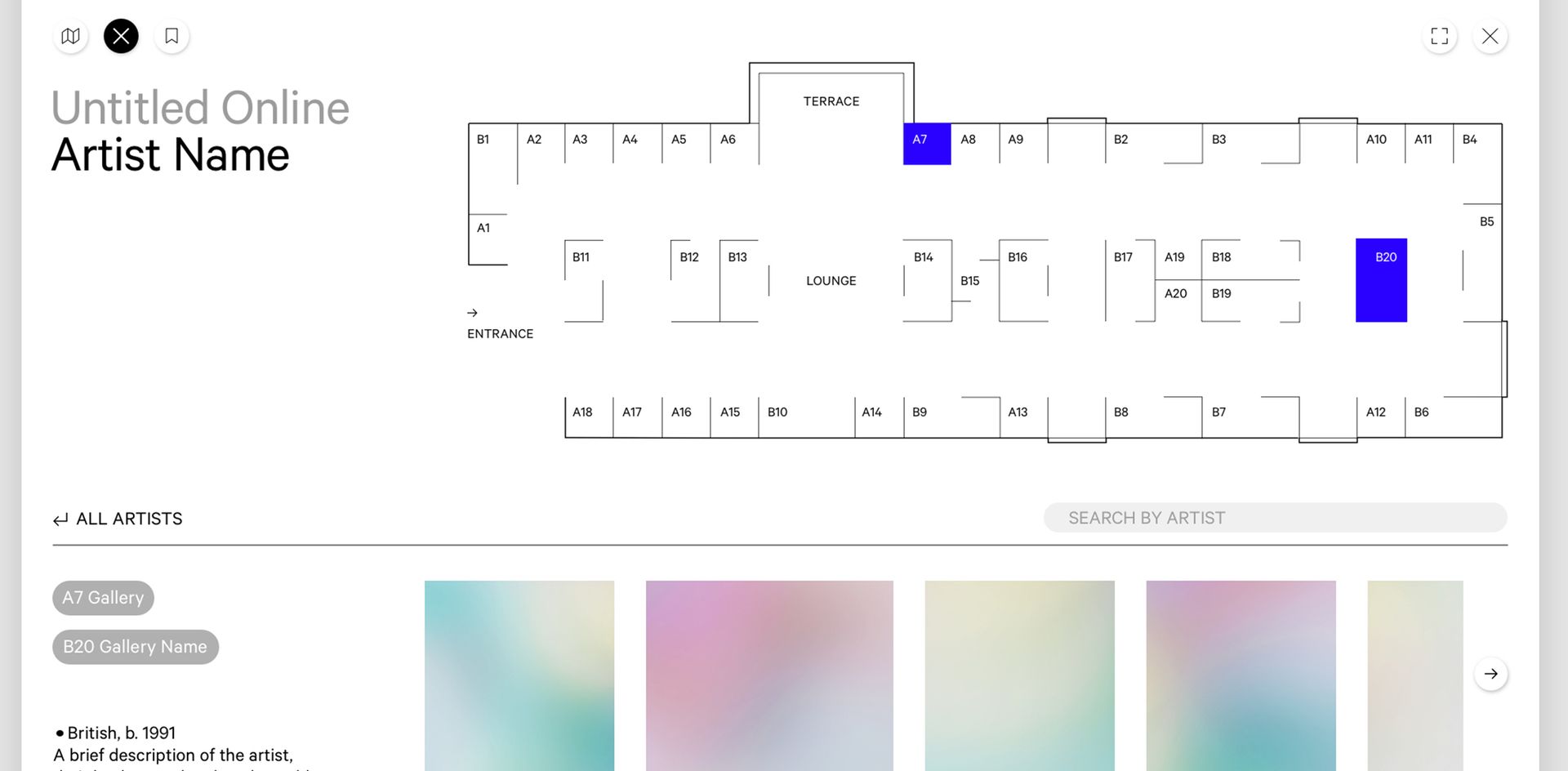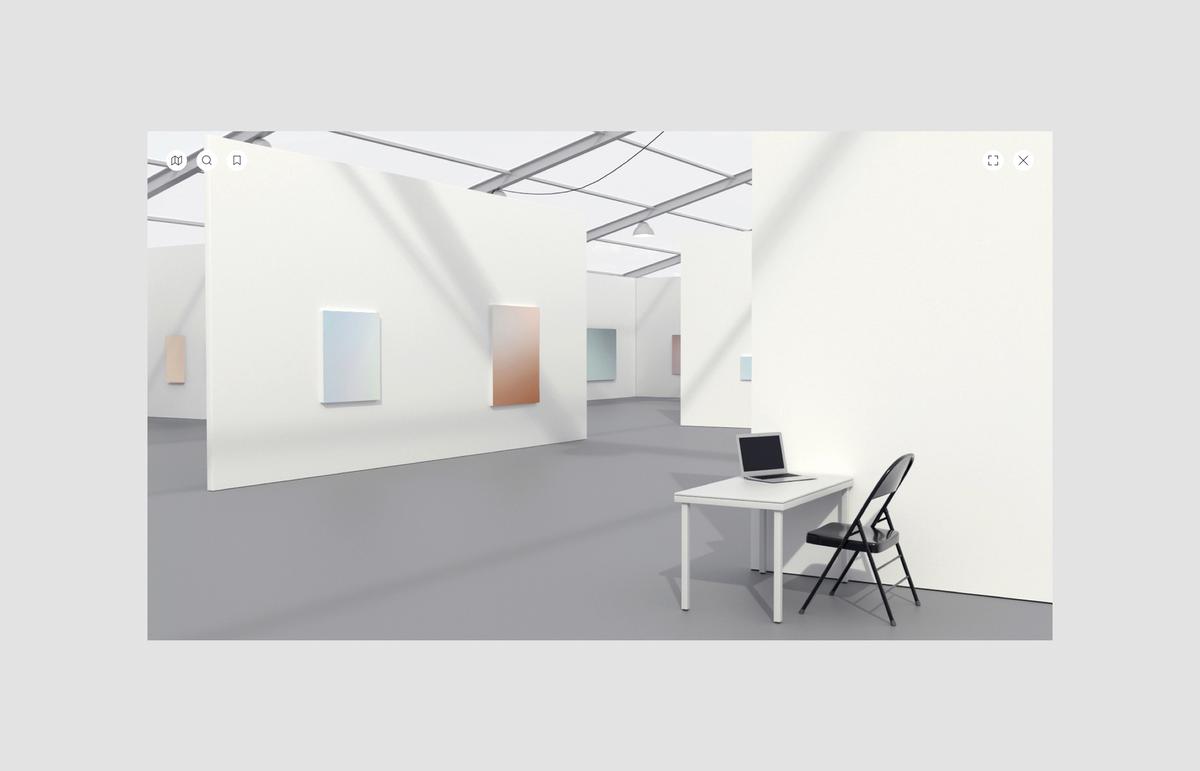So far, virtual art fairs have amounted to little more than overhyped websites with more than a few shortcomings, from faulty search filters to fractured payment protocols. In a lot of ways, recent online viewing rooms would have been more interesting—if not more efficient—as a Tumblr with a PayPal plugin. Historically sluggish to adopt 21st-century technology, the art trade is now quickly moving online and these kinds of growing pains are not only to be expected, but perhaps welcomed as they are spurring quick development among competitors.
Untitled, Art is the latest art fair to announce an online edition, launching this summer using virtual reality (VR) technology to better the user experience. The platform, developed with the Danish art-and-tech startup Artland, uses video game technology to imitate the IRL (in real life) art-fair feel of aisles; the first iteration of the online-only edition will be modelled on the layout of Untitled’s Miami Beach location and feature roughly 40 exhibitors.
According to the fair’s founder, Jeffrey Lawson, what is absent from current online fair platforms is the “element of discovery” that wandering the aisles of a physical event engenders. He adds that the “experience factor” is what makes fairs fun and, using video game technology, Untitled, Art Online visitors will be able to browse booths leisurely, or jump directly to where they want to go on the floorplan, “rather than just clicking through a couple of static pages”.
The technology has been under development with Artland since last summer and the virtual platform, like those developed by Art Basel and Frieze, was meant as a supplement to the Untitled’s physical fair before the coronavirus (Covid-19) lockdown made online sales obligatory.
Untitled is not the first to draw in video gaming principles—Hauser & Wirth debuted its own bespoke software last month—but it is the first fair to attempt to integrate VR experience with multi-vendor e-commerce. The interface, according to the co-founder and chief executive of Artland Mattis Curth, is “intuitive and interactive”, requiring only a mouse or arrow keys to navigate on a desktop and fingers on a touchscreen. Exhibitors will have the ability to customise their booth designs and re-hang artworks that have sold.

Search by artist name to see which galleries feature works by them. Courtesy of Untitled, Art and Artland
Each work is accompanied by a call-to-action (CTA) function, according to Curth, which means a dialogue box will pop up when a viewer “approaches” it. That box provides specifics about the work such as artist, medium and price, as well as an “inquire” or “buy” prompt that allows the viewer to express interest in the piece without ever navigating away from the page. Buyers will also be able to search for works by artist name, gallery, price and medium, among other criteria, and hop directly to the qualifying works within the booths.
Perhaps most crucially and contrary to Frieze’s and Art Basel’s platforms—which redirected buyers away from the fair and to the gallery’s website to make a sale, potentially causing attention attrition—purchases will be processed through a third-party platform, Escrow, that facilitates real-time buying at any time of day. Escrow vets buyers within ten minutes, explains Lawson, who adds that the service “alleviates the cumbersome need to engage in offline conversations”.
He adds that exhibitors have the choice as to which works they want to list as “buy-now” and inquiry only, as well as whether or not they want to list the sale price—something that has been lauded as a welcome if sometimes limited feature on other virtual platforms.
“We will encourage our clients to list prices and use the buy-now feature to encourage transparency in the marketplace,” Lawson says.
To that end, Untitled, Art Online is offering a transparent fee model. Exhibitors have two choices in booth size—200 sq. ft for $1,000 or 400 sq. ft for $3,000—and participate in a sliding-scale commission structure based on sales. The fee structure, according to Lawson, is meant to limit upfront costs for participating galleries and the fees cover IT support.


